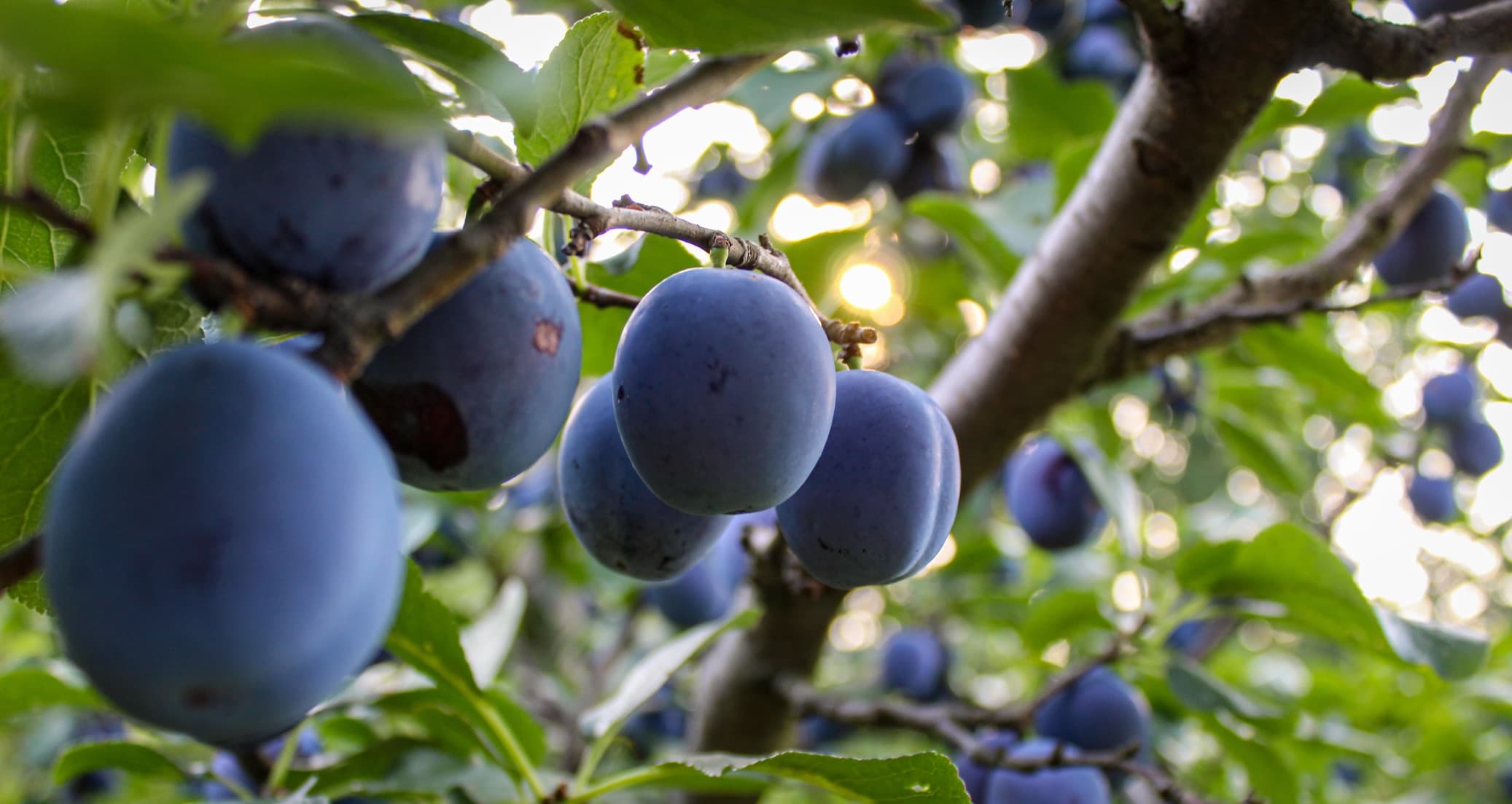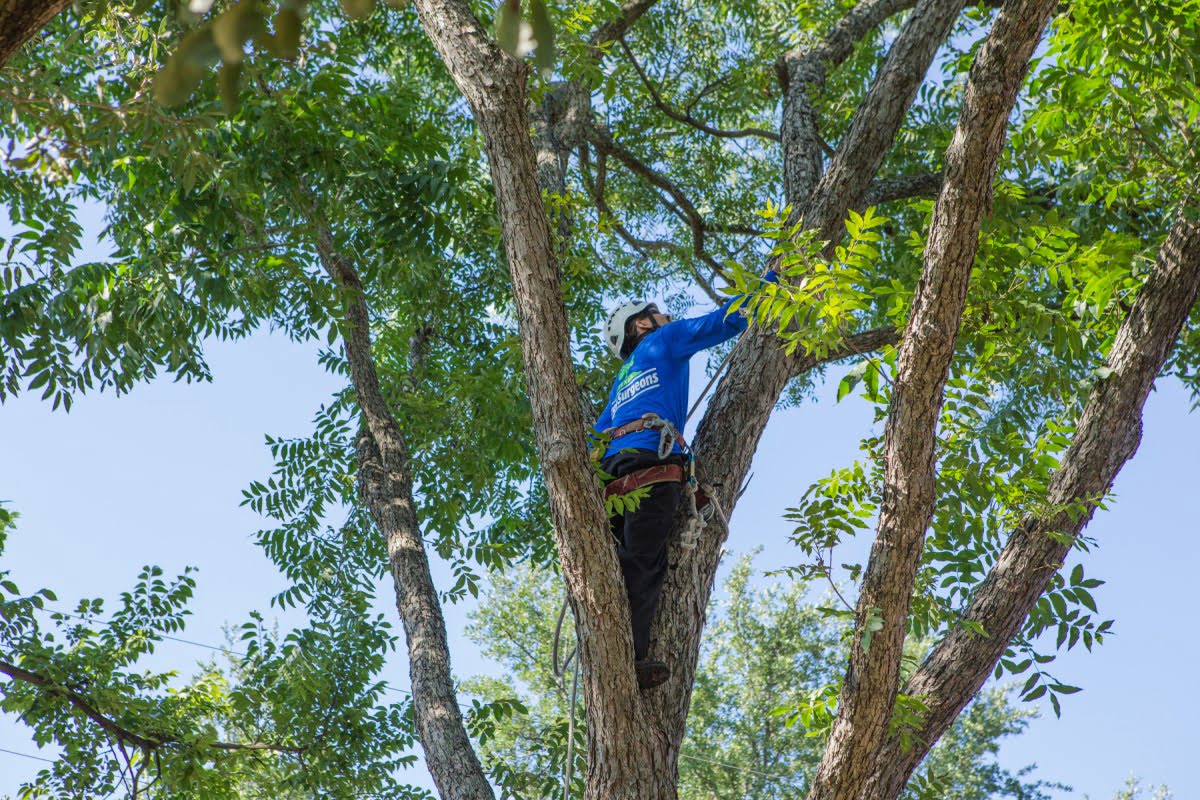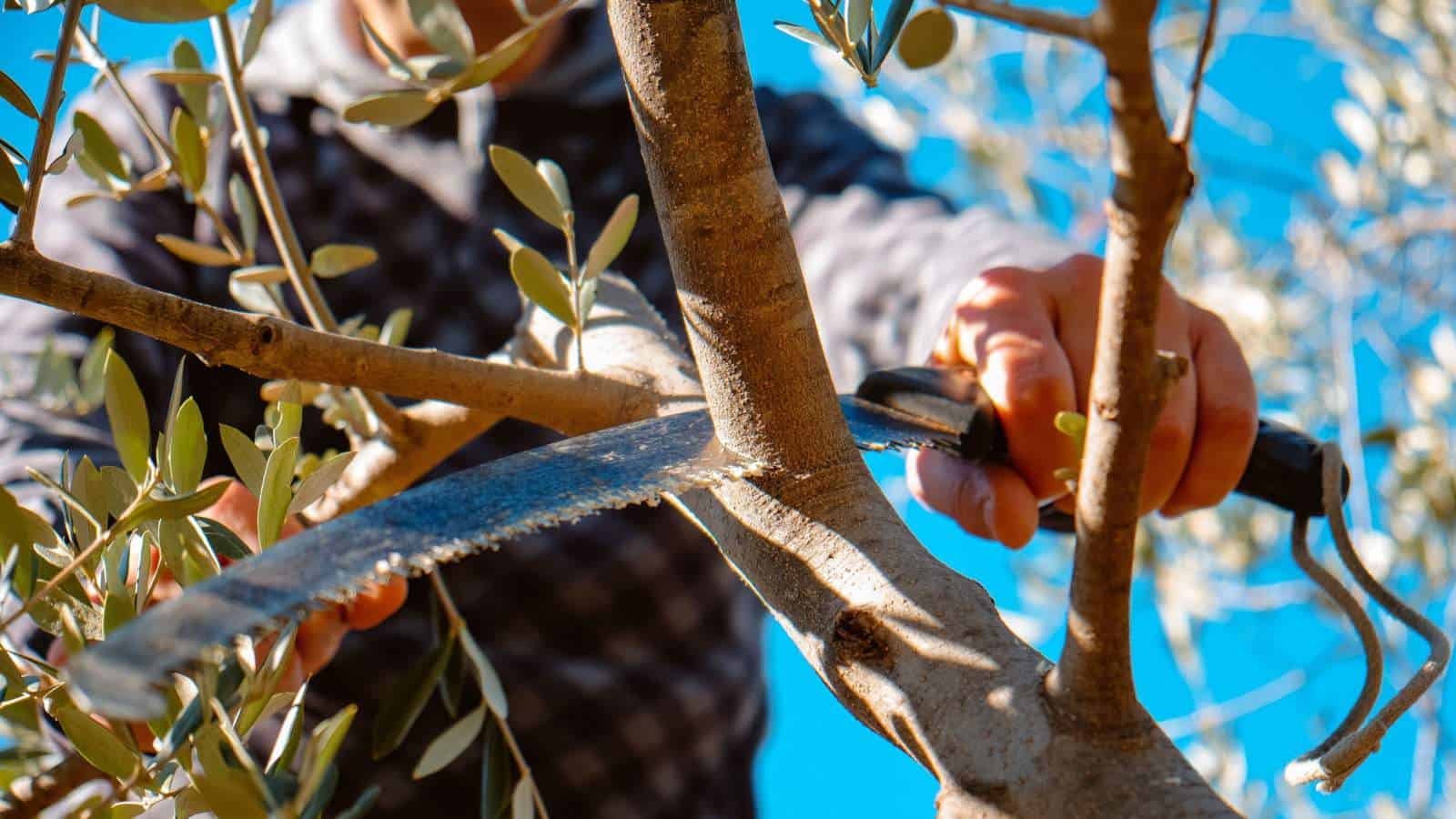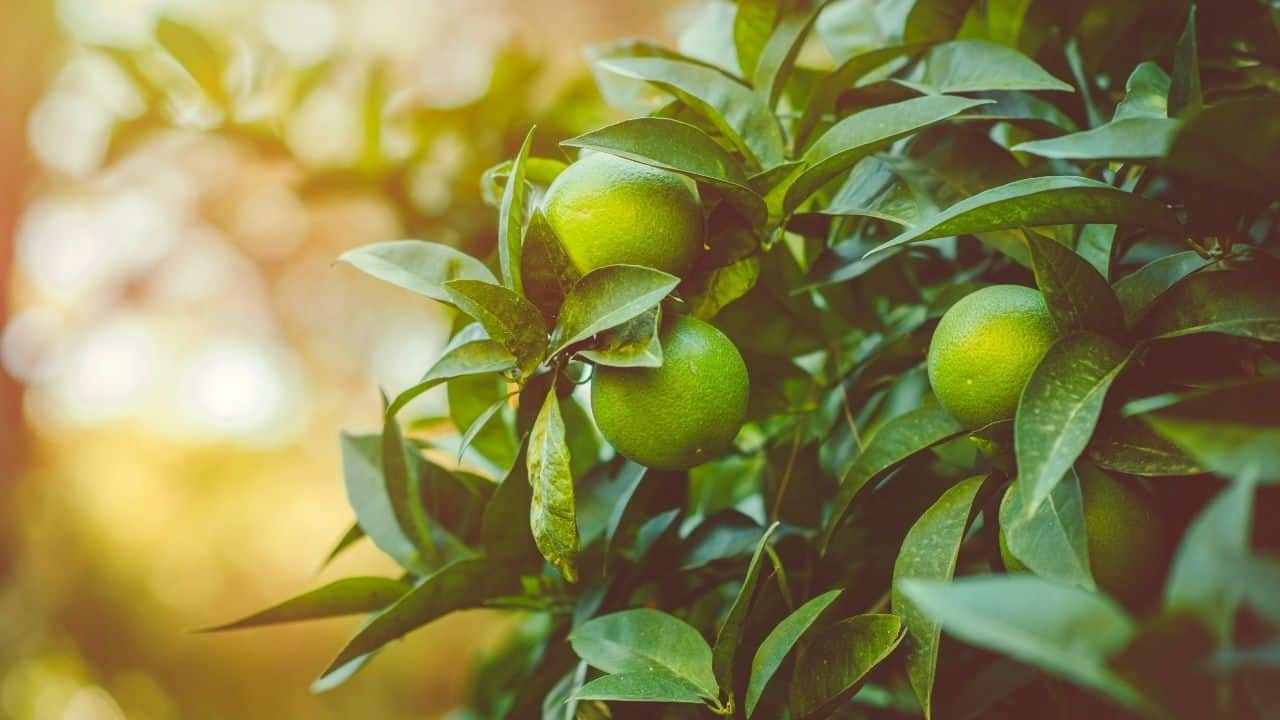Home>Gardening Techniques>Plant Care>When To Trim Plum Trees


Plant Care
When To Trim Plum Trees
Modified: January 22, 2024
Learn when and how to trim your plum trees for optimal plant care. Discover the expert tips and techniques to ensure healthy growth and abundant fruit production.
(Many of the links in this article redirect to a specific reviewed product. Your purchase of these products through affiliate links helps to generate commission for Chicagolandgardening.com, at no extra cost. Learn more)
Table of Contents
Introduction
Welcome to our complete guide on when to trim plum trees. Whether you’re a seasoned gardener or a plant enthusiast looking to explore the world of fruit tree care, we’ve got you covered. Trimming is an essential part of maintaining the health, aesthetics, and productivity of plum trees. However, knowing the right time to trim is crucial to ensure the best results.
Plum trees (Prunus species) are beautiful and valuable additions to any garden or orchard. These deciduous trees are known for their stunning blossoms in spring and bountiful harvests of juicy, delicious fruits. Regular pruning helps maintain the tree’s shape and size, promotes airflow and sunlight penetration, and improves fruit quality and yield.
Understanding the nuances of when to trim plum trees can greatly enhance your gardening experience. In this comprehensive guide, we’ll delve into the reasons for trimming, how to assess the tree’s health, the equipment needed, the best timing for trimming, pruning techniques, and precautions to take. By the end, you’ll have all the knowledge and confidence needed to keep your plum trees thriving.
So, if you’re ready to dive into the world of plum tree care, let’s get started by understanding the reasons why trimming is crucial.
Understanding Plum Trees
Before we delve into the intricacies of when to trim plum trees, it’s essential to have a basic understanding of these delightful fruit-bearing trees. Plum trees belong to the genus Prunus and are part of the Rosaceae family. There are various species and cultivars of plum trees, each with its unique characteristics, growth habits, and fruiting patterns.
Plum trees are deciduous, meaning they shed their leaves annually. They typically reach a height of 10 to 20 feet, although this can vary depending on the specific variety. Plum trees feature smooth bark, oval-shaped leaves that turn vibrant colors in the fall, and beautiful blossoms in various shades of pink, white, or red.
When it comes to fruiting, plum trees are highly productive, producing an abundance of delicious fruits. Plums come in various shapes, sizes, and colors, ranging from small and round to oval or heart-shaped. Their skin can be smooth or slightly fuzzy, and the flesh can be juicy and sweet or tart.
Plum trees are generally suitable for USDA hardiness zones 4 to 9, although certain varieties can thrive in other zones as well. They prefer well-draining soil and full sun exposure – at least six to eight hours of direct sunlight daily. Like most fruit trees, plum trees require regular care, including pruning, to ensure optimal growth and fruit production.
Now that we have a basic understanding of plum trees let’s explore the importance of trimming and how it contributes to the overall health and productivity of these magnificent trees.
Reasons for Trimming
Trimming plum trees is vital for several reasons. It not only helps maintain the tree’s shape and aesthetic appeal but also contributes to its overall health and productivity. Here are some key reasons why trimming is important:
- Encourages better airflow and sunlight: Regular pruning removes excess branches, allowing for improved airflow throughout the tree. This helps prevent the development of fungal diseases and promotes the circulation of fresh air, reducing the risk of pests and pathogens. Trimming also allows more sunlight to reach the interior branches, ensuring adequate photosynthesis for healthy growth.
- Promotes fruit production: Thinning out branches and removing excessive growth redirects the tree’s energy and resources to fruit production. By eliminating overcrowded branches, the remaining ones have access to more nutrients and sunlight, resulting in bigger, juicier, and more abundant plums.
- Controls tree size and shape: Trimming helps manage the size and shape of the plum tree, preventing it from becoming too tall or spreading too wide. Controlling the tree’s growth allows for easier maintenance, harvesting, and overall management of the tree within a limited space.
- Removes diseased or damaged branches: Trimming allows for the identification and removal of diseased, damaged, or dead branches. Pruning these branches not only improves the tree’s appearance but also prevents the spread of diseases or infestation to other parts of the tree.
- Encourages new growth: Pruning stimulates new growth and branch development in plum trees. When done correctly, it triggers the tree’s natural response to generate new shoots and branches, leading to a healthier and more robust tree structure.
By understanding these reasons for trimming, you can ensure the well-being and longevity of your plum trees. However, it’s essential to assess the health of the tree before embarking on a pruning journey. In the next section, we will discuss how to evaluate the tree’s health and make informed decisions regarding trimming.
Assessing the Tree’s Health
Before you start trimming your plum tree, it’s important to assess its health to ensure that pruning is appropriate and beneficial. Evaluating the tree’s health allows you to identify any issues or concerns that may need to be addressed during the trimming process. Here are some factors to consider when assessing the health of your plum tree:
- Overall appearance: Take a step back and observe the overall appearance of the tree. Look for signs of vigor, such as a balanced canopy, healthy foliage, and good branching structure. Any significant imbalances or abnormalities may indicate underlying health issues.
- Foliage condition: Examine the leaves for any discoloration, spotting, wilting, or signs of pests and diseases. Healthy leaves should be vibrant green and free from damage or deformities.
- Branch condition: Inspect the branches for any signs of damage, breakage, or dieback. Dead or decaying branches should be pruned to prevent the spread of disease.
- Presence of pests or diseases: Look for any indications of pest infestation or disease symptoms, such as insect eggs, webs, holes in the bark, or unusual growths on the branches. If you notice any concerning signs, it’s important to address them before proceeding with pruning.
- Fruit production: Assess the productivity of the tree by evaluating the quantity and quality of its fruit. A decline in fruit production or the presence of small, deformed, or diseased fruits may indicate underlying issues.
- Tree stability: Check the tree’s stability by examining its trunk and roots. Look for any signs of leaning, root damage, or instability that may require corrective measures.
By carefully assessing these factors, you can determine the overall health of your plum tree and make informed decisions about the appropriate trimming techniques to employ. If you notice any significant concerns or are unsure about the tree’s well-being, consulting a professional arborist or horticulturist is highly recommended.
Now that you have assessed the tree’s health and determined that trimming is necessary, let’s move on to the equipment you will need for the pruning process.
Equipment Needed
Trimming plum trees requires the right set of tools to ensure a safe and effective pruning process. Before you begin, make sure you have the following essential equipment on hand:
- Pruning Shears: Also known as hand pruners or secateurs, these are small, handheld tools with sharp blades designed for cutting branches up to ¾ inch in diameter. Look for high-quality shears with a bypass cutting action for clean and precise cuts.
- Loppers: Loppers are larger pruning tools with long handles and thick, sharp blades. They are ideal for cutting branches between ¾ inch to 2 inches in diameter. Choose loppers with comfortable grips and a ratchet mechanism for easier cutting of thicker branches.
- Pole Pruners: For trimming higher branches without the need for a ladder, pole pruners are indispensable. These tools consist of a telescopic pole with a pruning head attached to the end. Look for a lightweight and sturdy pole pruner with a sharp cutting blade for efficient pruning at various heights.
- Saw: A pruning saw or a hand saw is necessary for cutting larger branches that are too thick for loppers or pole pruners. Opt for a saw with a sharp, curved blade and comfortable handle to facilitate smooth and controlled cutting.
- Gloves: Investing in a pair of sturdy, protective gloves is essential to safeguard your hands from cuts, scratches, and potential thorns while handling branches.
- Safety Gear: Although not a tool per se, safety gear is crucial when working with sharp tools and overhead branches. Wear safety glasses to protect your eyes from falling debris and a sturdy pair of non-slip shoes or boots for stability and protection.
Having the right equipment is essential for a successful and safe trimming session. Ensure that your tools are in good condition, properly sharpened, and ready for use before you start pruning.
Now that you’re equipped with the necessary tools, let’s move on and discuss the optimal timing for trimming plum trees.
Timing the Trimming
Timing is a critical factor when it comes to trimming plum trees. Pruning at the right time ensures that the tree can recover quickly and minimizes the risk of disease or growth disruption. The timing for pruning plum trees can be divided into two main periods: dormant season and growing season.
Dormant Season: The dormant season, which occurs during late winter or early spring before the tree starts to bud, is an ideal time for major pruning. This is when the tree is in a dormant state, and the absence of leaves makes it easier to see the tree’s structure and make precise cuts. It’s generally recommended to prune plum trees during the late winter months, before the sap starts to flow. However, be mindful of severe winter weather conditions, as extreme cold or frost can damage the tree.
Growing Season: During the growing season, which is spring to early summer, pruning should be limited to light maintenance and corrective pruning. This includes removing any dead, damaged, or crossed branches, as well as thinning out overcrowded areas to improve airflow and light penetration. Avoid heavy pruning during this time to prevent stunting the tree’s growth and reducing fruiting potential.
It’s important to note that some plum tree varieties, particularly European plums, are more prone to diseases like silver leaf disease. To minimize the risk, it’s advisable to avoid pruning when the tree is actively growing, as fresh cuts are more susceptible to infection. If you need to prune during the growing season, be sure to apply a pruning sealant to the fresh cuts to protect them from pathogens.
Ultimately, the best time to trim your plum tree depends on the specific variety, local climate, and tree health. Always observe the tree’s growth patterns, monitor weather conditions, and consult local gardening resources or experts for more precise timing recommendations.
Now that we’ve covered the optimal timing for trimming plum trees, let’s move on to the essential techniques for pruning.
Pruning Techniques
Pruning plum trees requires careful attention to detail and the use of proper techniques to ensure optimal results. Here are some key pruning techniques to keep in mind:
- Thinning: One of the primary goals of pruning plum trees is to thin out crowded branches. Remove any branches that are crossing, rubbing against each other, or growing towards the center of the tree. Thinning helps improve airflow and light penetration, reducing the risk of disease and promoting better fruit development.
- Heading Back: Heading back involves cutting back the tips of branches to promote new growth and maintain the desired shape of the tree. When heading back branches, make clean cuts just above a bud or lateral branch. Avoid leaving stubs, as these can lead to dieback or disease entry points.
- Retaining the Central Leader: Plum trees are typically trained with a central leader, which is the main vertical stem. To maintain this central leader structure, remove any competing leaders or side branches that are growing upward and overshadowing the central leader.
- Pruning Cuts: When making pruning cuts, use sharp tools to ensure clean, precise cuts. Make cuts at a slight angle, just outside the branch collar (the swollen area where the branch meets the trunk or another branch). This helps promote quick healing and minimizes the risk of disease transmission.
- Remove Suckers and Water Sprouts: Suckers are vigorous shoots that grow from the base of the tree or from the roots. Water sprouts are fast-growing vertical shoots that emerge from older branches. These should be promptly removed, as they divert energy from fruiting and can weaken the overall structure of the tree.
- Step Back and Assess: As you prune, take breaks and step back to assess the tree’s balance, shape, and overall appearance. This allows you to make any necessary adjustments and ensure that you’re maintaining a well-proportioned and aesthetically pleasing tree.
Remember, moderation is key when pruning plum trees. Avoid excessive pruning, as it can weaken the tree and reduce fruit production. Always prioritize removing dead, damaged, or diseased branches, and aim to maintain a balanced structure that allows for optimal light and airflow distribution.
Now that you’re familiar with the essential pruning techniques, let’s move on to the precautions you should take when trimming plum trees.
Precautions to Take
While pruning plum trees can be a rewarding and beneficial activity, it’s important to take certain precautions to ensure your safety and the health of the tree. Here are some essential precautions to keep in mind:
- Wear Protective Gear: Always wear gloves, safety glasses, and sturdy footwear to protect yourself from cuts, scratches, and falling debris. Additionally, consider wearing long sleeves and pants to shield your skin from potential irritants or allergens.
- Use Sharp and Properly Maintained Tools: Dull or damaged tools can make pruning more difficult and increase the risk of accidents. Ensure that your pruning tools are sharp, properly maintained, and in good working condition before starting. Clean and sanitize your tools after each use to prevent the spread of disease.
- Exercise Caution on Ladders or Elevated Surfaces: If using a ladder or working on an elevated surface, make sure the ladder is stable and properly positioned. Have someone assist you if needed, and never overreach or lean too far while pruning.
- Prune Mindfully: Pay close attention to your surroundings and be aware of nearby power lines, buildings, or other obstacles that may pose a risk. Also, avoid pruning during windy conditions to prevent branches from unexpectedly snapping or falling.
- Prune with Purpose: Have a clear plan and objective in mind when pruning. Random or excessive pruning can harm the tree and impact its future growth and fruit production. Be selective and make deliberate cuts based on the tree’s health, shape, and well-being.
- Disinfect Your Tools: To prevent the spread of diseases or pathogens, disinfect your pruning tools between each cut or when moving from one tree to another. You can use rubbing alcohol or a bleach solution to sanitize the blades.
By taking these precautions, you can ensure a safe and successful pruning session that benefits both you and your plum tree.
With the necessary precautions in mind, you’re now ready to prune your plum tree with confidence and care! Remember that proper pruning techniques and timing are crucial for maintaining the health, beauty, and productivity of your tree.
Conclusion
Congratulations! You’ve reached the end of our comprehensive guide on when to trim plum trees. We’ve covered a variety of important topics, including understanding plum trees, reasons for trimming, assessing the tree’s health, the equipment needed, timing the trimming, pruning techniques, and precautions to take.
By now, you should have a solid understanding of the importance of trimming plum trees and how it contributes to their overall health, productivity, and aesthetics. Remember, regular pruning promotes better airflow and sunlight penetration, improves fruit production, and helps maintain the desired size and shape of the tree.
Before you start pruning, take the time to assess your plum tree’s health and ensure you have the necessary equipment on hand. Always prune mindfully using appropriate techniques, such as thinning, heading back, and removing suckers and water sprouts. Additionally, don’t forget to take the necessary precautions to ensure your safety, such as wearing protective gear and using properly maintained tools.
As you embark on your pruning journey, remember to strike a balance between maintaining the health of the tree and retaining its natural beauty. With patience, practice, and a little bit of knowledge, you can transform your plum tree into a thriving and visually stunning centerpiece in your garden or orchard.
We hope this guide has provided you with helpful insights and guidance for successfully trimming your plum trees. Happy pruning!










